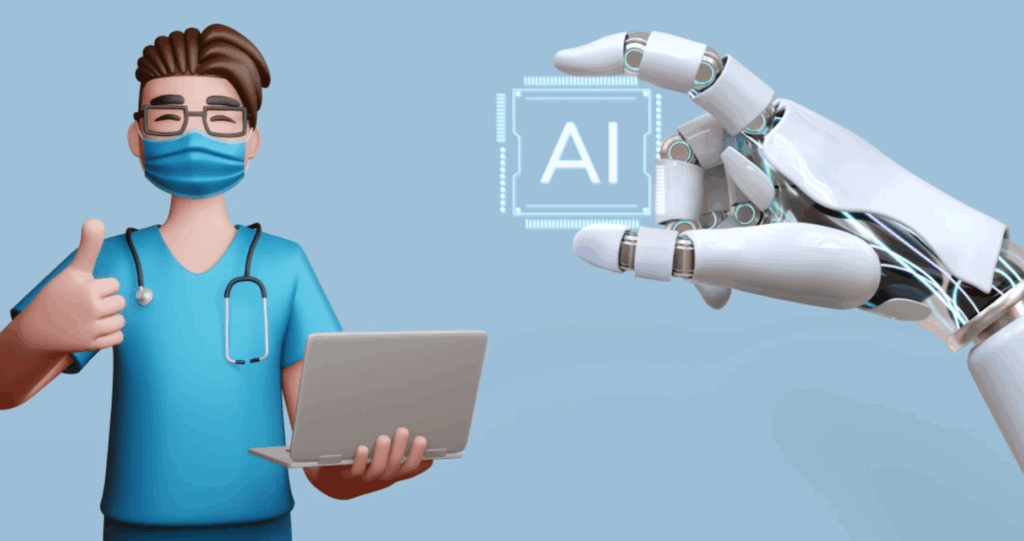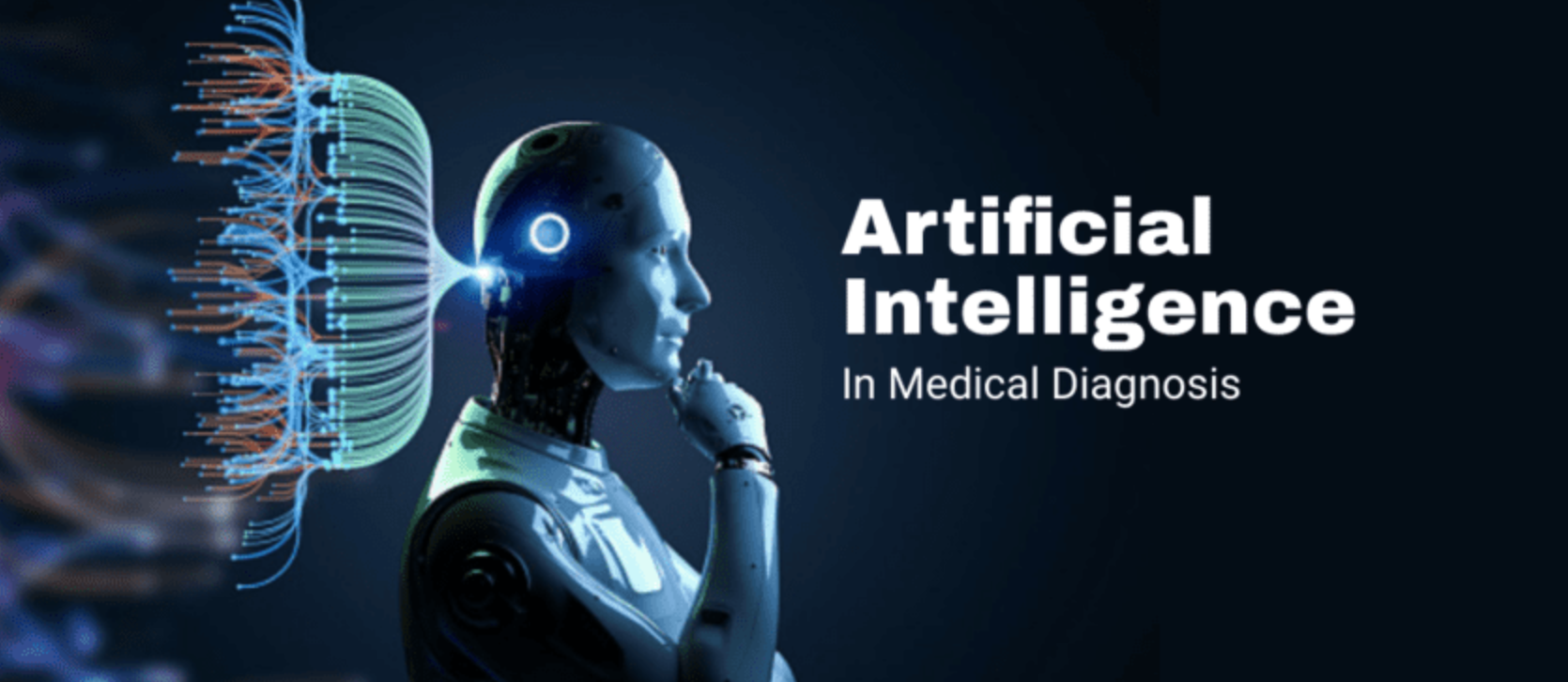🧠 Top AI Diagnostic Tools in Healthcare 2025: Revolutionizing Medical Diagnosis
Artificial Intelligence (AI) is reshaping the landscape of medical diagnostics, offering unprecedented accuracy, speed, and efficiency. In 2025, several AI-powered tools are at the forefront of this transformation, assisting healthcare professionals in delivering timely and precise diagnoses.
📱 Leading AI Diagnostic Tools

1. Aidoc
- Overview: Aidoc provides AI solutions that analyze medical imaging to detect critical conditions such as strokes, pulmonary embolisms, and intracranial hemorrhages.
- Features:
- Real-time analysis of CT scans
- Prioritization of urgent cases
- Integration with existing radiology workflows
- Benefits:
- Accelerated diagnosis and treatment
- Reduced radiologist workload
- Improved patient outcomes(Wikipedia, Latest news & breaking headlines)
2. Digital Diagnostics
- Overview: Digital Diagnostics offers FDA-cleared AI systems for autonomous diagnosis of diabetic retinopathy and other conditions.
- Features:
- Autonomous AI diagnostic platform
- Integration with retinal imaging devices
- Real-time diagnostic results
- Benefits:
- Early detection of eye diseases
- Accessible diagnostics in primary care settings
- Reduced need for specialist referrals(Digital Diagnostics, CDA-AMC, The Washington Post)
3. Qure.ai
- Overview: Qure.ai develops AI algorithms for interpreting radiology images, aiding in the detection of abnormalities in X-rays and CT scans.
- Features:
- Automated interpretation of chest X-rays
- Detection of brain injuries in CT scans
- Integration with PACS systems
- Benefits:
- Faster diagnosis in emergency settings
- Enhanced diagnostic accuracy
- Support for radiologists in high-volume environments(Medicai\’s Blog | Cloud PACS solution, Wikipedia, Tateeda Global)
4. Butterfly Network
- Overview: Butterfly Network offers a handheld, AI-powered ultrasound device that connects to smartphones, enabling point-of-care imaging.
- Features:
- Portable ultrasound device
- AI-guided image acquisition
- Cloud-based image storage and analysis
- Benefits:
- Accessible imaging in remote areas
- Real-time diagnostic support
- Reduced need for bulky imaging equipment(Technology Ally, Verywell Health)
5. Viz.ai
- Overview: Viz.ai uses AI to detect large vessel occlusions in stroke patients, facilitating rapid communication between emergency departments and specialists.
- Features:
- AI analysis of CT angiograms
- Automated alerts to stroke teams
- Mobile app for real-time collaboration
- Benefits:
- Reduced time to treatment for stroke patients
- Improved coordination among care teams
- Enhanced patient outcomes(Wikipedia, VKTR.com, Qure AI, New York Post, SpectralAI)
📊 Comparison Table
| Tool | Best For | Pros | Cons | Price Range |
|---|---|---|---|---|
| Aidoc | Radiology imaging analysis | Real-time alerts, workflow integration | Requires high-quality imaging data | Contact for pricing |
| Digital Diagnostics | Autonomous eye disease diagnosis | FDA-cleared, accessible in primary care | Limited to specific conditions | Contact for pricing |
| Qure.ai | Chest and brain imaging | Quick analysis, PACS integration | May require customization | Contact for pricing |
| Butterfly Network | Point-of-care ultrasound | Portable, AI-guided imaging | Initial device cost | ~$2,000 per device |
| Viz.ai | Stroke detection and coordination | Rapid alerts, mobile collaboration | Focused on stroke care | Contact for pricing |
🛍️ Where to Access These Tools
- Aidoc: Visit Aidoc’s website to request a demo and pricing information.
- Digital Diagnostics: Learn more and contact sales through Digital Diagnostics’ website.
- Qure.ai: Explore solutions and request a demo at Qure.ai’s website.
- Butterfly Network: Purchase devices and accessories directly from Butterfly Network’s store.
- Viz.ai: Schedule a demo and learn about implementation at Viz.ai’s website.(Wikipedia, Digital Diagnostics, Qure AI)
🎯 Use Cases and Solutions
- Emergency Departments: Tools like Aidoc and Viz.ai expedite diagnosis and treatment in time-sensitive conditions such as strokes and traumatic injuries.
- Primary Care Clinics: Digital Diagnostics enables early detection of eye diseases without the need for specialist referrals.
- Remote and Underserved Areas: Butterfly Network’s portable ultrasound devices bring imaging capabilities to locations lacking traditional equipment.
- Radiology Departments: Qure.ai assists in managing high volumes of imaging studies, ensuring prompt identification of critical findings.
❓ Frequently Asked Questions
Q1: Are AI diagnostic tools replacing doctors?
A: No, these tools are designed to assist healthcare professionals by providing rapid analysis and identifying potential issues, allowing doctors to make more informed decisions.
Q2: How accurate are AI diagnostic tools?
A: Many AI tools have demonstrated high accuracy rates, often matching or exceeding human performance in specific tasks. However, they are most effective when used in conjunction with clinical expertise.
Q3: What are the costs associated with these tools?
A: Costs vary depending on the tool and implementation scale. Some, like Butterfly Network’s devices, have upfront costs, while others may require subscription or licensing fees. It’s best to contact the providers directly for detailed pricing.
Embracing AI in healthcare diagnostics enhances the capabilities of medical professionals, leading to improved patient care and outcomes. As technology continues to evolve, these tools will play an increasingly vital role in the healthcare ecosystem.
